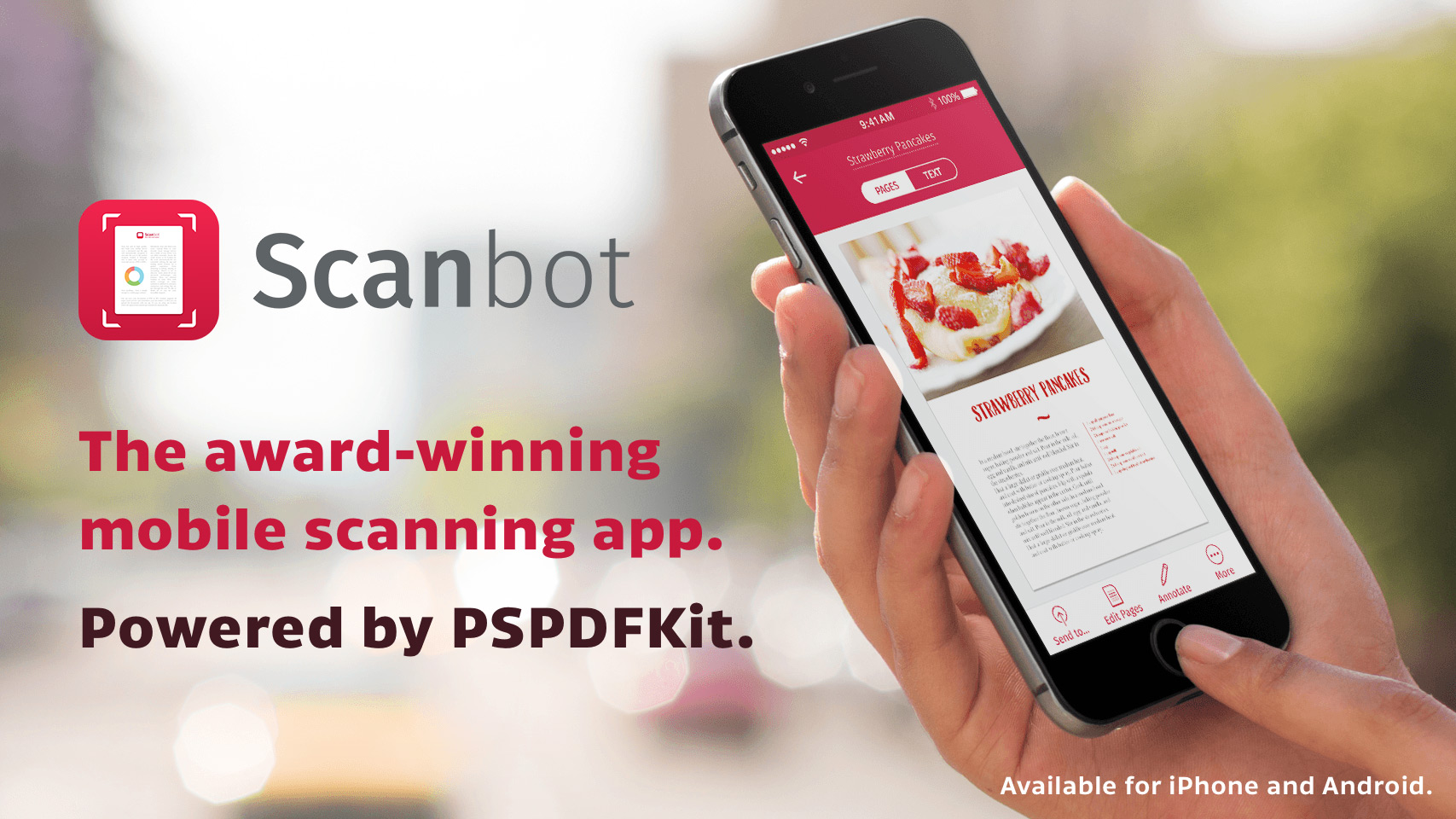
Scanbot is the leading mobile scanner app in the App Store powered by technology similar to our [barcode scanner SDK][], with more than 6 million downloads and an average of 1.5 million documents scanned per month. On Android, it has been downloaded 2.2 million times and its users scan an average of 271,000 documents per month. And in 2017 alone, Scanbot digitized more than 25 million documents across both platforms. In short, it’s an understatement to say that this app is merely important to those who use it — it’s a necessity!
In recognition of Scanbot’s performance, Apple awarded the company Best of 2014, 2015, and 2017, and also featured it as an Editors’ Choice, while Google gave the company the “Top Developer” badge.
But how did Scanbot get started with its PDF technology?
As a scanner app, we’ve naturally faced the challenge of working with PDFs since day one,
said Max Stratmann, head of operations for Scanbot. The last thing we want to do is peruse page after page of PDF specifications.
Scanbot asked its dev team whether it wanted to develop and maintain the PDF rendering, viewing, and editing functionality in-house; adopt, implement, and maintain a third-party open source solution; or rely on a software development kit (SDK).
The answer wasn’t immediately apparent, as the first solution would not only require the team to understand, build, and cover all possible edge cases of a notoriously large specification, but also maintain the product to stay up to date with changing OS requirements. Meanwhile, using an open source solution wasn’t out of the question, but the initial tweaking involved and the upkeep it required would take away from the time Scanbot meant to spend on improving its main product.
Finally, if Scanbot wanted to use an SDK, both cost and finding a partner that was the right fit were considerations.
The outstanding customer support provided by PSPDFKit with their quick response and update times never ceases to amaze us. Working with the SDK and the team of PSPDFKit is a flawless and seamless experience and, in the end, even outright fun. – Max Stratmann, head of operations for Scanbot
After weighing the pros and cons of each option, the team leaned more heavily toward the option of partnering, but the question was with whom? According to Stratmann, the ideal partner would provide an SDK that would save us countless developer hours by providing a toolkit that might actually enable us to significantly enhance the user experience of our app while conforming to our high-quality standards.
In the end, Scanbot opted to go with PSPDFKit, a company it first encountered in the Twittersphere. After seeing the list of PSPDFKit’s trusted partners and knowing that the company’s CEO is active in the developer community, it seemed to be a no-brainer for Stratmann and the rest of Scanbot.

But the reasons for Scanbot’s pick extend far beyond reputation to include the fact that PSPDFKit fulfills three main criteria for the company:
-
We offer solid modules to work with PDF files. Our framework is comprised of powerful UI components developers can use and easily adapt to their UX.
-
Our SDK is updated on a regular basis, keeping up with every platform’s major new developments, while at the same time adding exciting new features.
-
The implementation of PSPDFKit is straightforward due to its ease of integration, user-friendly interface, extensive documentation, and professional, fast support.
With the SDK implemented in Scanbot, its users can work with scanned documents from their mobile devices while on the go. It has opened up a world of possibilities — from basic functionalities like rotating, moving, or adding and deleting pages, up to annotating and signing documents.
Using PSPDFKit offers a flawless experience — for us and our users,
Stratmann said. We are excited to continue our partnership with PSPDFKit for future updates and are looking forward to integrating some of the upcoming new functionalities into our app.
[barcode scanner sdk]: /sdk/solutions/scanning-barcodes/




